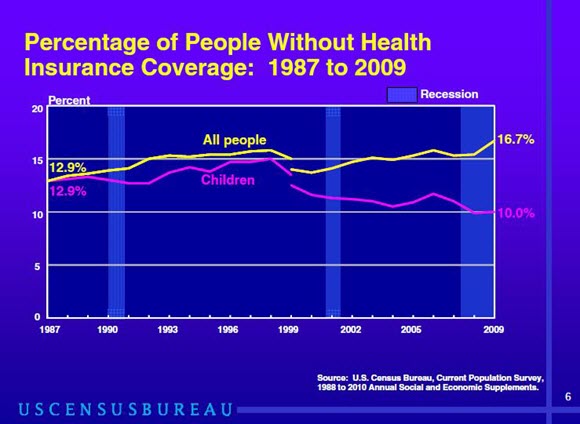
An official website of the United States government
Here’s how you know
Official websites use .gov
A .gov website belongs to an official government organization in the United States.
Secure .gov websites use HTTPS
A lock (
) or https:// means you’ve safely connected to the .gov website. Share sensitive information only on official, secure websites.
-
//
- Census.gov /
- Census Blogs /
- Random Samplings /
- Health Insurance: Who Has Coverage, Who Doesn't?
Health Insurance: Who Has Coverage, Who Doesn't?
Health Insurance: Who Has Coverage, Who Doesn't?
In recent months you’ve probably heard figures cited on news broadcasts countless times on the number of people who do not have health insurance. Every year, these figures are released by the U.S. Census Bureau.
The Census Bureau has published numbers on health insurance coverage since 1987. Notably, 2009 marks the first year in which the number of people with health insurance has declined, as it dropped to fewer than 254 million. This can be attributed, in part, to the fact the percentage of people covered by private insurance ─ usually provided through an employer ─ is now the lowest since that year.
Each year, we ask roughly 78,000 households about whether they had any coverage during the previous calendar year in the Current Population Survey. This is the source of the numbers used as the nation determines the course to follow on this issue. The information you give in answering our surveys helps policymakers, advocacy groups and think tanks understand the extent of the lack of health insurance.
To access all of our health insurance data, visit:
Publication
Share
 Yes
Yes
 No
NoComments or suggestions?


Top

